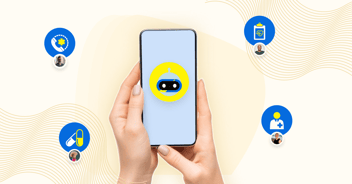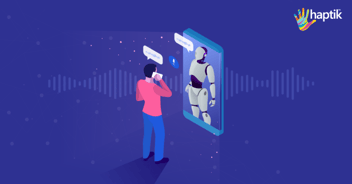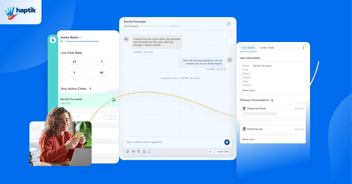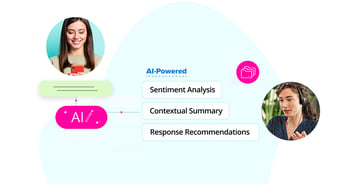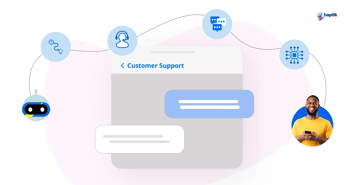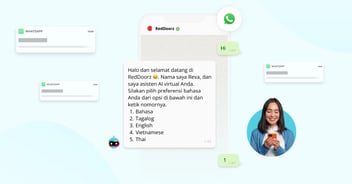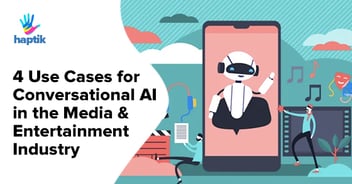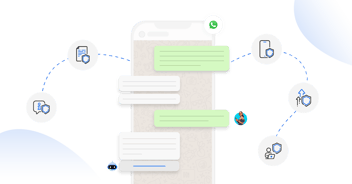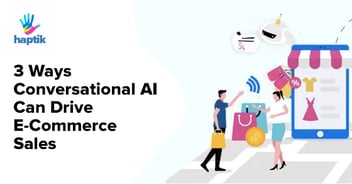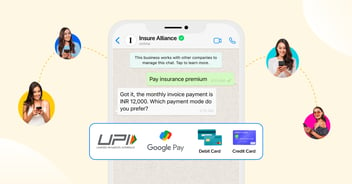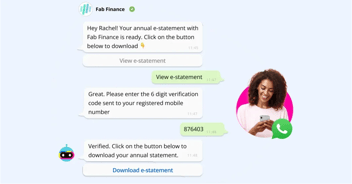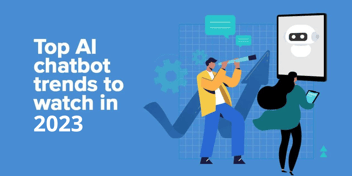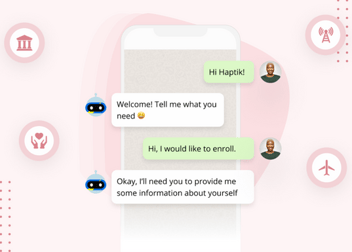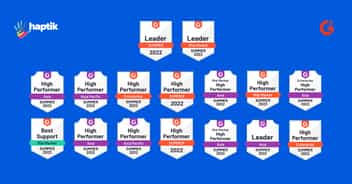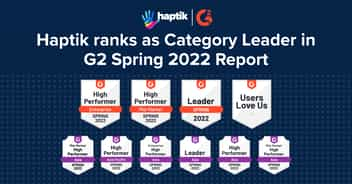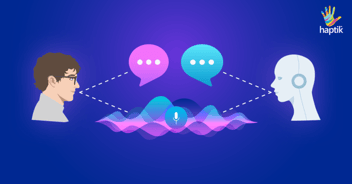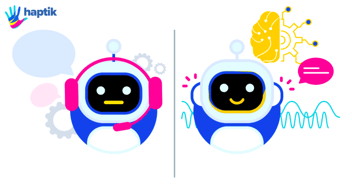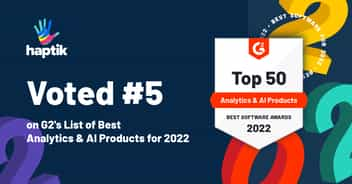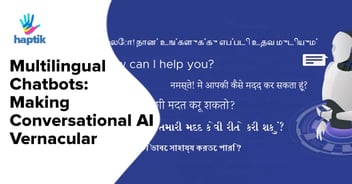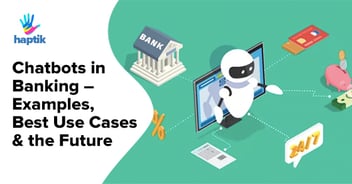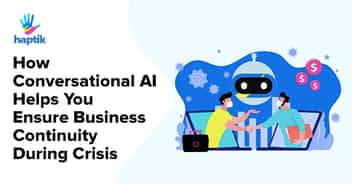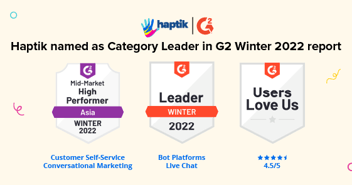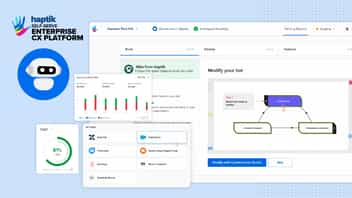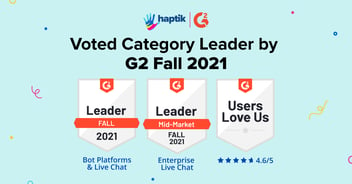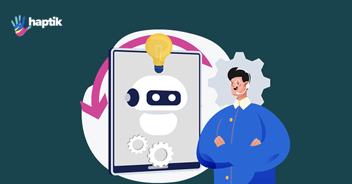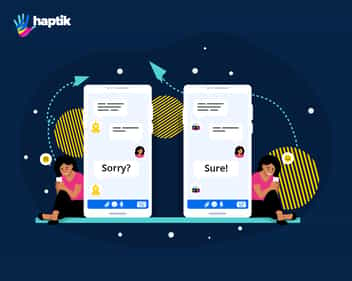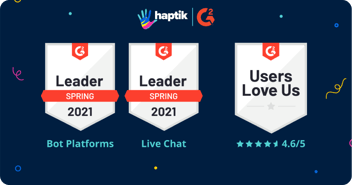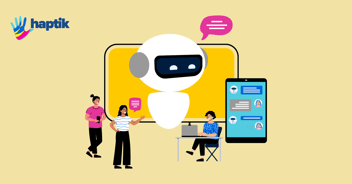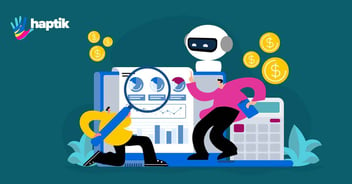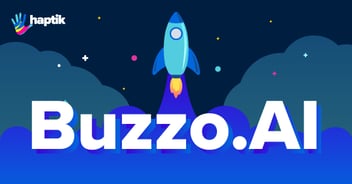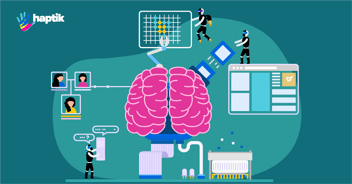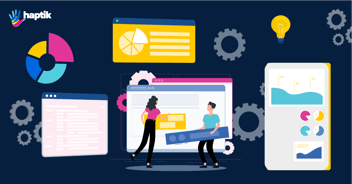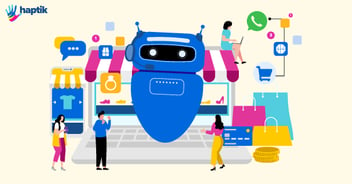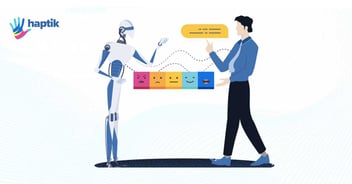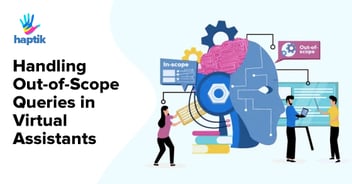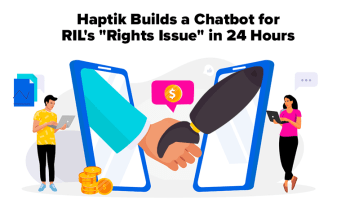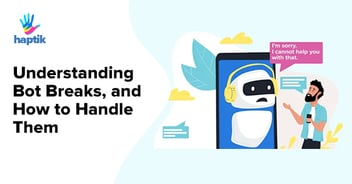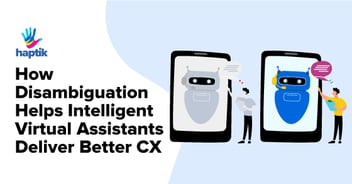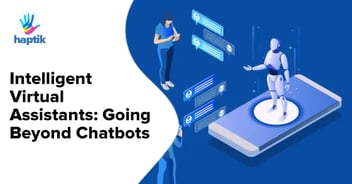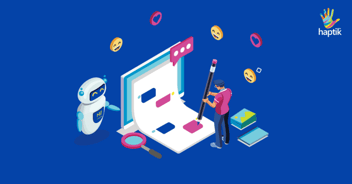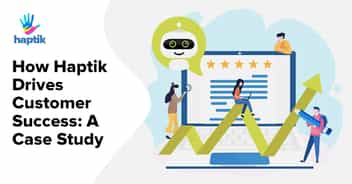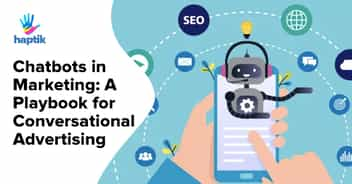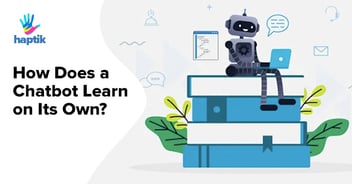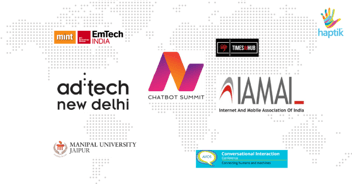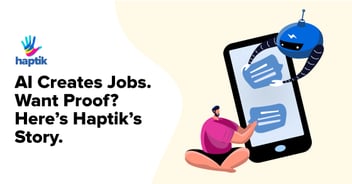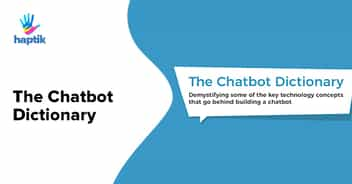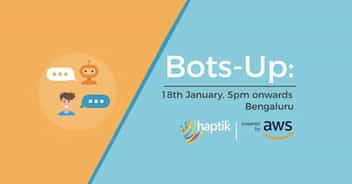No Code Chatbots: Leverage Technology To Boost Customer Satisfaction
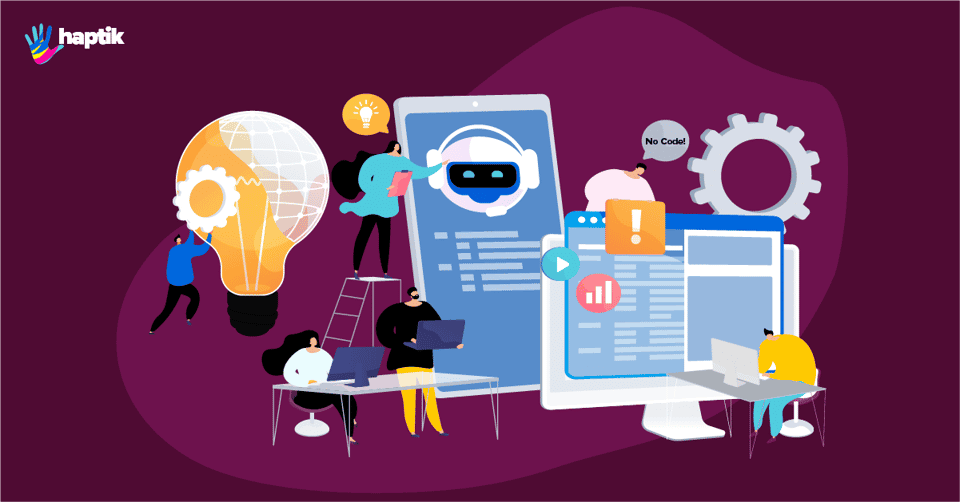
As organizations look at customer satisfaction as a crucial element of competitive strategy, conversational artificial intelligence (AI) has assumed vital importance. Chatbots are the most visible adoption of AI. Research by Forrester on the impact of IBM Watson chatbots found that organizations saved $5.50 per contained conversation, resulting in an impressive 237% RoI. Chatbots are also finding favor with customers. 40% of millennials use chatbots daily to connect to all kinds of businesses. As businesses are using chatbots to serve various use cases, including marketing & sales to support, it has already become as essential a tool as email.
While the underlying implementation of conversational AI is complex, it is possible to start benefiting even if you don't have excellent coding capabilities, a development team, and a large budget. This article will describe ways you can build and utilize the chatbots without coding.
Types of Chatbots: A Comparative
We can categorize the chatbots into two broad categories: rule-based and conversational chatbots.
Rule-Based Chatbots
The rule-based chatbots work based on predefined inputs and keywords. Developers code instructions beforehand that respond to specific input patterns and commands. The bot asks questions and provides options to customers for choice. Based on the selected option, the bot performs the next steps. Such chatbots can also identify the intent based on keywords from the sentences or answers you type. For example, an insurance chatbot may present types of insurance policies (e.g., life insurance, vehicle insurance, or health insurance).
Depending upon the answer you choose or type (e.g., I want to purchase a life insurance policy), it identifies the action and responds based on its program. The back end dictionary can be extensive so that rule-based chatbots can serve a wide range of use cases. However, they make the customer adapt to the commands and patterns. The customers need to either remember those commands, or the bot must provide appropriate but limited options. Rule-based chatbots are similar to how traditional IVR works.
If not implemented optimally, customers will find the experience of using a rule-based chatbot unsatisfactory. For short customer journeys, such an implementation might work. But if your process has many steps, customers might experience navigation fatigue. The time taken to complete the process hurts customer engagement.
Conversational AI Chatbots
The Conversational AI chatbots, on the other hand, can find customer intentions from a natural conversation. Customers interact with these bots naturally as they converse with other humans. The bot is intelligent enough to identify what the customer wants.
Such implementation is made possible by Machine Learning (ML) and AI algorithms that support Natural Language Processing (NLP). Depending upon the use case, certain implementations can also use Computer Vision (CV) to identify objects, including humans and documents.
You need to train the underlying algorithms extensively for AI chatbots to work effectively. The training refers to providing the algorithms enormous sets of historical data and the signals about how that data is interpreted. Based on such training, the algorithms can identify the patterns in conversations they are holding. The accuracy of such chatbots depends upon the volume and quality of the historical data. However, as more people use it, these machine learning (ML) algorithms improve their accuracy by automatically learning from new conversations.
Challenges of Developing Chatbots
While it is possible to create a chatbot from scratch with code, there are significant challenges. Building even rule-based chatbots from scratch is complicated. While you can integrate limited, simple questions & answers easily, any substantial use case has complexities. For example, any decent chatbot would require useful UI/UX elements and integrations with APIs and databases. Depending upon the geographies that your business operates in, you might also need to support multiple languages.
We recommend this article on Usability Heuristics to Design Better Chatbots to decode the UX fundamentals for designing chatbots.
The challenges increase with conversational chatbots. The first challenge is to train the underlying ML algorithms with massive datasets. Unless the bot responses are accurate, they can be counterproductive. If you are looking at serving customers meaningfully, you will need your chatbots to support complex business workflows. For example, if a hospitality business decides to implement a chatbot to serve their customers across hotel chains, they need to enable booking inquiries, reservation and cancellations, and invoicing processes. Adding voice support for such chatbots adds another layer of complexity given the accents and variations in spoken languages.
Deploying to multiple channels can be difficult, as every platform and channel has unique requirements. Building a bot for Facebook Messenger is quite different from building a bot for WhatsApp or Slack. Coding, maintaining, and upgrading each channel's bots demands considerable effort and time.
There are two other ways of creating a chatbot.
-
Use platform APIs and frameworks to develop the core portion of the chatbot but build surrounding parts through code.
-
Use tools that allow you to create chatbots without coding
Let's evaluate both these approaches.
Creating Chatbots with APIs
Most of the known platforms (Google, Amazon, IBM, Microsoft) provide APIs and frameworks that allow you to leverage their services for creating chatbots. Apart from these, there are known APIs like Wit.ai and platform-specific APIs like Facebook Messenger APIs, Slack Bot APIs, and Telegram Bot APIs.
While these APIs provide the support for underlying ML & AI capabilities for a few use cases, you will still need to build the rest of the workflows yourself. Depending upon your requirements, you may need to develop the ML models and training the algorithms too. The platform-based APIs also restrict the bots to their respective channels (e.g., Facebook Messenger); hence you might have disparate codebases to maintain.
Learn More: How to pick the right use-cases for your Chatbot
Create Chatbots Without Coding
Many capable frameworks exist that allow you to create rule-based or channel-specific chatbots without code. However, there are fewer choices of platforms that will enable you to make more capable, conversational chatbots that can serve various needs and use cases. Deploying a chatbot will be one of the critical initiatives, and hence you must choose your platform carefully.
The following are the characteristics of a good platform that allows you to build chatbots without coding.
-
What kind of business processes can the platform support? Is there any out-of-the-box support for a variety of end-to-end workflows? For example, can you automate your entire hotel booking process, starting from inquiry to payment and confirmation? A good platform may make predefined journeys available by default. If not, how quickly and easily can you build that?
-
How does the platform support languages? Does it have multi-lingual support already built-in? If not, how easy or difficult is it to add a new language? Since the conversational aspect is critical, supporting various languages becomes vital if you have a multilingual customer base.
-
Does it support voice conversations? Voice-based conversational bots are gaining momentum given their benefits. It helps if the platform you choose supports integrating NLP capabilities to support voice conversations.
-
How does the platform support building an excellent user experience and interface? For example, if you are making a chatbot for your eCommerce store, how well can the chatbot present your merchandise? The aesthetics and experience play a big part in customer purchase decisions and satisfaction. Your platform of choice must support building great interfaces quickly.
-
What kind of channels (e.g., Facebook Messenger or WhatsApp) does the platform support? Can you utilize the chatbot built with the platform on web, iOS, and Android applications? How many other platforms can it support?
-
How well does the bot support an omnichannel experience? Customers value a consistent experience, no matter the channel they use. A good bot framework should enable you to develop such consistent experiences. Building such omnichannel bots also means it can seamlessly use the information across channels without the customer having to repeat themselves.
-
How easy is it to use third-party APIs with the chatbot built with the platform? If you want to support a complicated use case, you will likely need data from multiple sources. Some data will come from other applications you are using, while some other capabilities might require specialized APIs. Unless such integrations are easy to implement, you may have to invest extra efforts or find sub-optimal workarounds.
-
How well can the platform support bot-to-human transfer by intelligently assessing the customer needs? Recent research by G2 Crowd shows that conversational chatbots have a 73 percent satisfaction rate among their users (virtualpbx.com), but there would be times when customers would want to speak to a human agent.
Additional Factors to Consider
The ease of building no-code chatbots doesn't mean it is trivial to build such bots. To use such platforms, you need to have a good grasp of business needs and customer mindset. While these platforms make developing sophisticated chatbots easy, you must also know how to use the platform itself. Choosing the right platform becomes critical in this case, as otherwise, the constraints of the platform can create challenges to achieve your goals.
Along with these functional and technical aspects, you must also look at the possible RoI on your chatbot development and maintenance investments. While some platforms may prove cost-effective in the short term, scaling them as you progress might mean added investments, thus increasing your lifetime costs. A balance between immediate needs and future scalability is essential.
Haptik's Conversation Studio is one of the leading platforms that can enable you to build a capable code-less chatbot quickly. The chatbots built using this platform can effectively perform the intended tasks. They also use the conversational data to make the underlying ML algorithms more accurate.
The Conversation Studio compliments Haptik’s Smart Skills, the optimized ready-to-deploy user journey recipes that can instantly enable you to automate many standard use cases and workflows. Additionally, you can also leverage the rich Integration Ecosystem with out-of-the-box integrations with leading ERP & CRM systems and helpdesk solutions. You can also deliver an omnichannel experience, leverage seamless AI to agent handoff, and gain valuable 360-degree customer insights to enhance the value even more.
Know More: How AI Chatbots help Transforming Customer Experience in Southeast Asia
Advantages of No-Code Chatbots
No-code chatbots offer multiple advantages to businesses. Let's see a few of the critical benefits.
Increased Cost Savings
Chatbots offer substantial cost savings. A Juniper study predicts that by 2022, conversational chatbots will deliver $8 billion in cost savings. As the business environment gets fiercer, the need to quickly finetune customer experience to match their expectations also increases. The no-code chatbots offer agility to businesses to roll-out solutions. Apart from getting a competitive advantage, such quicker and frequent releases allow enterprises to test assumptions and finetune the customer journeys optimally.
Enhanced Business Agility
Using the no-code platforms, you can develop chatbots faster than when you code them from scratch. Since most of the building blocks would be already available on the platform, you can focus on core business features that enhance the chatbots' effectiveness. Your development team doesn't need to focus on basic features that don't offer any competitive advantage but are essential for the bots' smooth functioning.
Better Strategic Alignment
There are other advantages too. One of the most significant benefits is a closer alignment between business requirements and chatbot outputs. Often, the strategic needs get lost in communication between business and technology teams. As platforms that offer chatbots development without coding allow cross-functional participation, it is easier to ensure that the end product is closely aligned to customer expectations and business needs.
In many cases, business users with deep domain expertise can build and refine bots without the friction of having to explain their ideas to others. Such flexibility results in better outcomes while still enabling a mature technical foundation.
Increased Security
Another critical aspect of chatbot deployment is security. The security threats are getting more severe and sophisticated with enhancements in technology. Poorly coded chatbots can make businesses vulnerable to all kinds of attacks. Your use case may involve using chatbots for enabling financial transactions or exchanging sensitive customer and business information. In such cases, the threat severity increases. To ensure protection for chatbots, code developed in isolation can leave businesses more vulnerable. Platforms that offer chatbots without coding offer better safety and security to the bots.
To Sum Up
In the age where customer engagement and satisfaction are difficult to achieve, chatbots have become an essential tool and not just nice-to-have for businesses. However, getting the chatbot equation right is tricky. Chatbots are inherently complex to build. Utilizing appropriate ML and AI algorithms, training those algorithms with enough training data, and achieving the required accuracy demands extensive time, effort, and skills. Any small mistake can have catastrophic consequences.
With evolving technology, No-Code chatbot building platforms can provide accurate implementation without the challenges of building a bot from scratch. Forrester estimates that 57% of companies are already using such enterprise no-code chatbot platforms, and the trend is going to continue upwards. These platforms take care of the hardest parts of chatbot implementation while enabling you to reap the benefits.



